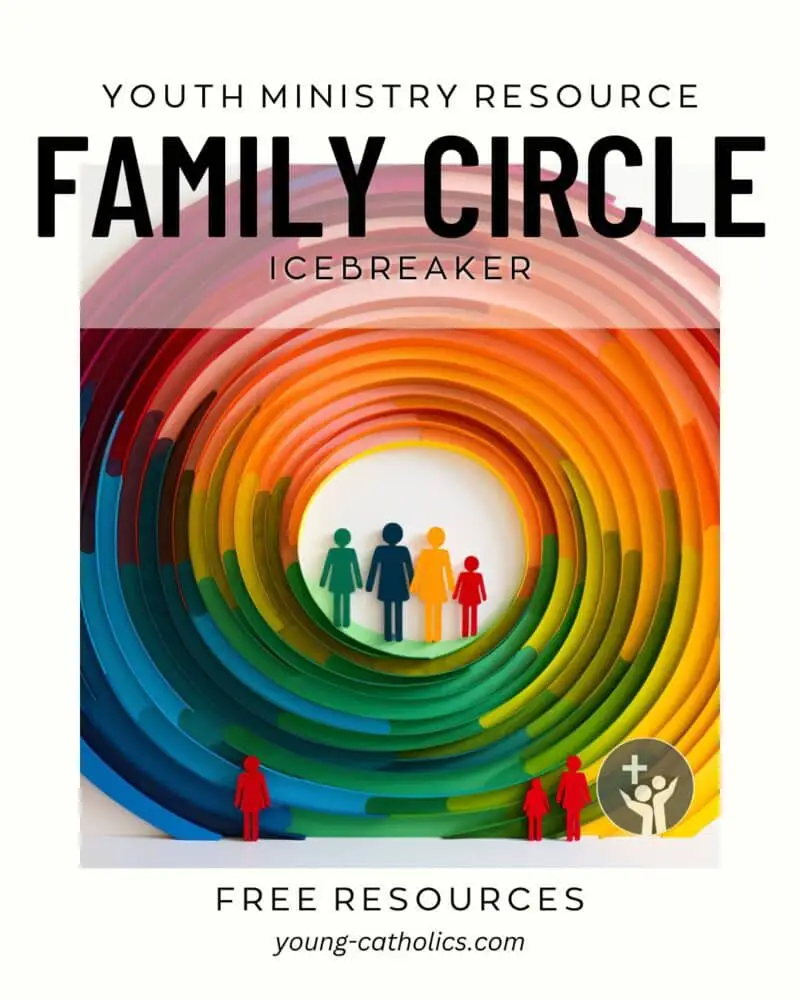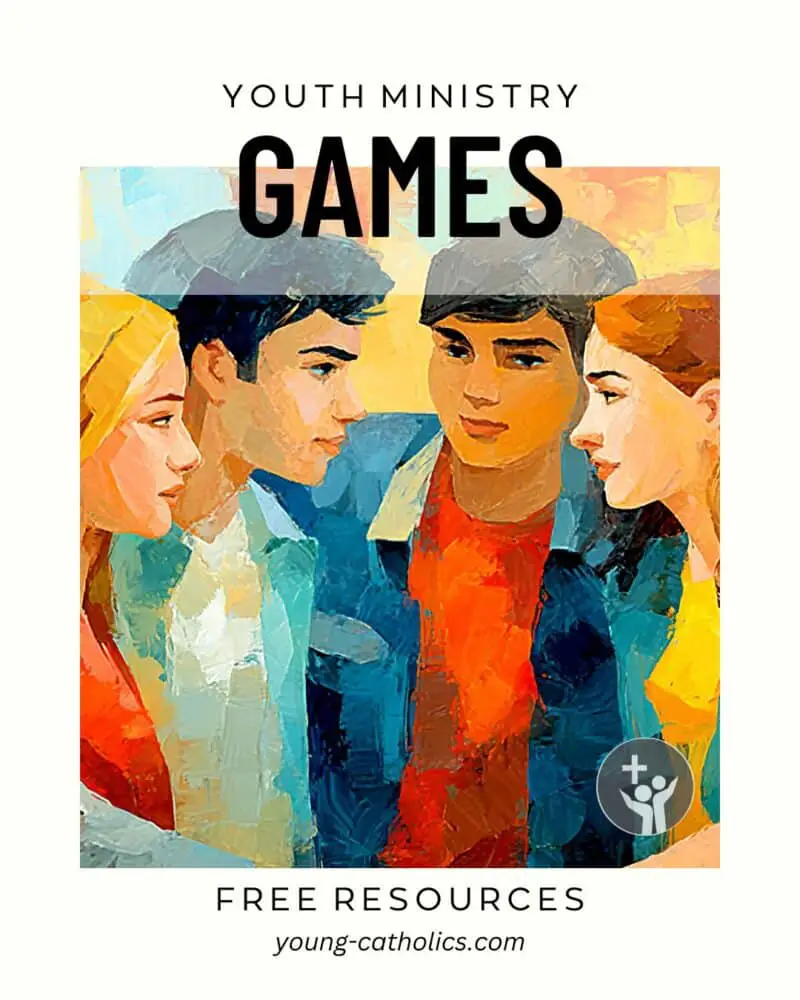Family Circle Icebreaker Game

Getting to know others in a group can be hard, especially when people don’t know each other well. The Family Circle game helps break the ice and gets everyone talking. It starts with a simple question about favorites, but it leads to a lot of fun and laughter. Youth quickly learn things about each other that they didn’t know before.
This game helps young people feel seen and heard. When they share something they like, it makes them feel important. Listening to others also teaches respect. Each person gets a chance to be known and noticed. That builds a stronger group where kids feel safe and welcome.
Family Circle also teaches teamwork. Once someone becomes the Head of the Household, they work with their new “family” to figure out more answers. This builds trust and communication. It shows youth that working together helps everyone succeed.
Finally, this game helps build memory and focus. Players have to remember what they heard at the start and think carefully before they guess. It’s fun, but it also helps with listening and thinking. Youth grow in ways they don’t even notice while they play.
Guess Who’s Coming to Dinner
The Family Circle game can remind us of the way Jesus invited people to be part of His family. In the Gospels, Jesus often ate with others. He shared meals with all kinds of people—fishermen, tax collectors, and even sinners. He didn’t care about how important they were. He just wanted them to be close to Him. This game starts with small things like favorite foods or movies, but it helps young people practice welcoming others.
The game also connects with the idea of the Body of Christ. In the Church, we are all different, but we belong together. Everyone brings something special. In Family Circle, no answer is wrong. Every favorite is valued. That helps youth understand that they are loved and needed in the Church, no matter who they are.
Another theme is hospitality. Abraham welcomed strangers under his tree and found he was entertaining angels. The game invites each person into a bigger group, one by one. This can lead to a good conversation about how we welcome others in real life—at school, at Mass, or in our parish.
Family Circle helps youth ministry by opening hearts. It makes room for laughter and joy. It lowers walls and helps teens feel they belong. That makes it easier for them to talk about faith later on. And it gives them a little glimpse of what the Kingdom of God might feel like—everyone gathered, everyone known, everyone welcome.
How to Play the Family Circle Game
Materials Needed
- Slips of paper (one per person)
- Pencils or pens
- One large bowl or container
Setup Instructions
- Have the group sit in a large circle, with space between each person.
- Give each player one slip of paper and a pencil or pen.
- Choose a fun category, such as food, movie, song, or book.
- Ask each player to write a sentence like this: “My favorite [category] is [answer],” and include their name.
- Collect all of the slips and place them in the bowl.
- Mix the slips well so the answers are shuffled.
How to Play
- One adult or leader reads each slip out loud without saying the name.
- After all slips have been read, choose someone to be the first Head of the Household (HOH).
- The HOH picks someone in the circle and asks, “Was your favorite [category] [guess]?”
- If the guess is correct, the player joins the HOH’s family by sitting next to them. The HOH gets another turn.
- If the guess is wrong, the player becomes the new HOH. The old HOH and their whole family now join the new HOH’s family.
- The new HOH takes a turn and the game continues.
- Players try to remember the answers they heard earlier to help with guesses.
- The game ends when everyone is in one big family.
Extra Notes
- You can change the category each time you play to keep it fresh.
- The HOH can ask their family for help before making a guess.
- Keep the game friendly and light. Remind players not to give away their answers by reacting.
- Make sure the circle is big enough so everyone has space and can hear the guesses clearly.
- If you are playing with younger kids, consider limiting the number of players or shortening the number of slips to read.
Resources

More Youth Ministry Games
The Family Circle Icebreaker game is a fun way to help youth feel included and noticed. It brings laughter, sharing, and connection. If your group enjoys this game, you might be looking for more simple ideas that bring people together in a meaningful way.
Visit our youth ministry games page to find other great options like the Family Circle Icebreaker game. You’ll discover more activities that help youth open up, build trust, and have fun while growing in faith. These games work well for small groups, retreats, and weekly meetings.
Questions and Answers about the Family Circle Icebreaker Game
What is the Family Circle Icebreaker game?
The Family Circle Icebreaker game is a fun group activity where players guess each other’s favorite things. It helps people learn about each other in a friendly and simple way.
How many people can play the Family Circle Icebreaker game?
The game works best with 6 to 20 players. You can play with more, but it might take longer.
What age group is the Family Circle Icebreaker game for?
This game is great for middle school, high school, or college youth. Younger kids can also play with help from a leader.
How long does the Family Circle Icebreaker game take?
It usually takes about 20 to 30 minutes. It may take longer if you have a large group.
Do I need special supplies for the Family Circle Icebreaker game?
You just need slips of paper, pencils or pens, and a bowl. These are things you probably already have.
Can we use different categories?
Yes! You can use any topic like favorite food, song, movie, saint, or Scripture story. Pick one that fits your group.
Is the Family Circle Icebreaker game good for shy youth?
Yes. It helps shy youth join in without feeling too much pressure. Everyone has a chance to share and listen.
Everyone Ends Up in the Same Pew
The Family Circle Icebreaker game is a fun and easy way to bring a group together. It starts with a simple question and grows into something joyful. Players laugh, guess, and slowly draw closer in a circle that keeps growing. It’s a playful way to build trust and understanding.
This game helps each person feel known. It shows that everyone’s voice matters. A favorite snack or movie may not seem like a big deal, but sharing it can make someone feel seen. That matters a lot in youth ministry.
The goal of the game is not to win. The goal is to end up together. Just like the Church is meant to be one family, this game lets that idea come alive in a fun and gentle way. It gives young people a way to bond without pressure.
This game also opens doors for deeper talks later on. Once the ice is broken, it’s easier to pray together, learn together, and grow in faith. All it takes is a few slips of paper, a bowl, and a willingness to play.
Your Turn
If you are looking for a simple and fun way to bring your group together, give the Family Circle Icebreaker game a try. It works well at the start of a meeting, on a retreat, or anytime your group needs a gentle way to connect.
We’d love to hear how it went. Did you use a different category? Did something funny happen? Leave a comment with your ideas and tips. Your version might help another group make even more memories.



Leave a Reply